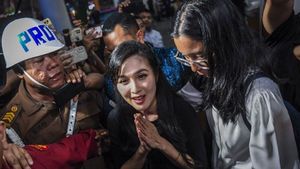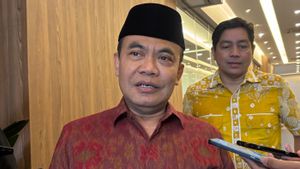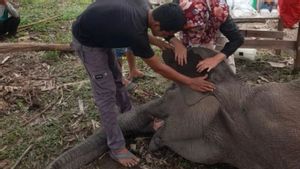YOGYAKARTA - President Joko Widodo will soon revoke the status of the COVID-19 pandemic in the country. The President, who will end his term of office in 2024, has decided that Indonesia will enter an endemic phase. So what are the differences between the pandemic and endemic?
President Jokowi revealed that the government had held a meeting regarding the status of the COVID-19 pandemic. He said there were still a number of studies that needed to be done. For the announcement of the change in the status of the pandemic to endemic, Jokowi still has not confirmed when it will be delivered.
"Yesterday we had a meeting and we decided to enter the endemic, but when it was announced it was only finalized in a week or two," said President Jokowi at the BPKP Office, Jakarta, Wednesday (14/6).
The revocation of the pandemic status was carried out following the declining number of active COVID-19 cases. In addition, President Jokowi also emphasized the number of vaccinations that have been achieved in Indonesia. Many people question the differences between the pandemic and the endemic.
The change in the status of the COVID-19 pandemic to endemic is certainly good news for the people of Indonesia. After living a life that was completely limited due to the COVID-19 pandemic for two years, now people can breathe more relievedly. Differences in pandemics and endemics are determined from the level of disease spread, not from how severe the disease is.
Here are the differences between pandemic and endemic that you need to know:
Quoted from the World Health Organization, a pandemic is a disease that adds to its exponentially developing cases. The pandemic is the status of spreading disease outbreaks that have attacked many countries and infected a large population. The pandemic is international and its spread occurs massively out of control, and causes large-scale social and economic disturbances.
An outbreak of diseases declared pandemic status means a drastic increase in cases. Outbreaks that triggered the pandemic were declared a major problem for the whole world. In addition to COVID-19, disease outbreaks with pre-occurred pandemic status are such as Spanish flu, bird flu, swine flu, and others.
Endemic is a condition where disease spread is only limited in certain areas. The area affected by the endemic has a smaller coverage than the pandemic. A disease outbreak can be declared endemic if the spread only occurs in a particular area or population of people.
Examples of the spread of diseases that include endemic, namely malaria that occurs in Papua, hepatitis in Indonesia, cold disease in East Java, and others. Although the endemic is quite dangerous, the disease can be controlled. Endemic status in an area can also turn into a pandemic depending on the rate of spread of the disease.
There are a number of criteria that must be met to change the status of the pandemic to endemic. Here are a number of indicators:
To be able to change the status of the pandemic to endemic, a number of the above indicators must occur within a certain period of time, for example seven months. In the target to accelerate the endemic, there are several efforts made by the government and supported by the community, for example through the provision of booster vaccinations, easing provisions, and others.
Such is the review of the differences in pandemics and endemics. Pandemic status can turn into an endemic when the number of transmissions and COVID-19 cases has decreased, and quite a lot of people have received vaccinations to increase immunity.
Stay up to date with the latest domestic and other overseas news on VOI. You present the latest and most updated nationally and internationally.
The English, Chinese, Japanese, Arabic, and French versions are automatically generated by the AI. So there may still be inaccuracies in translating, please always see Indonesian as our main language. (system supported by DigitalSiber.id)













